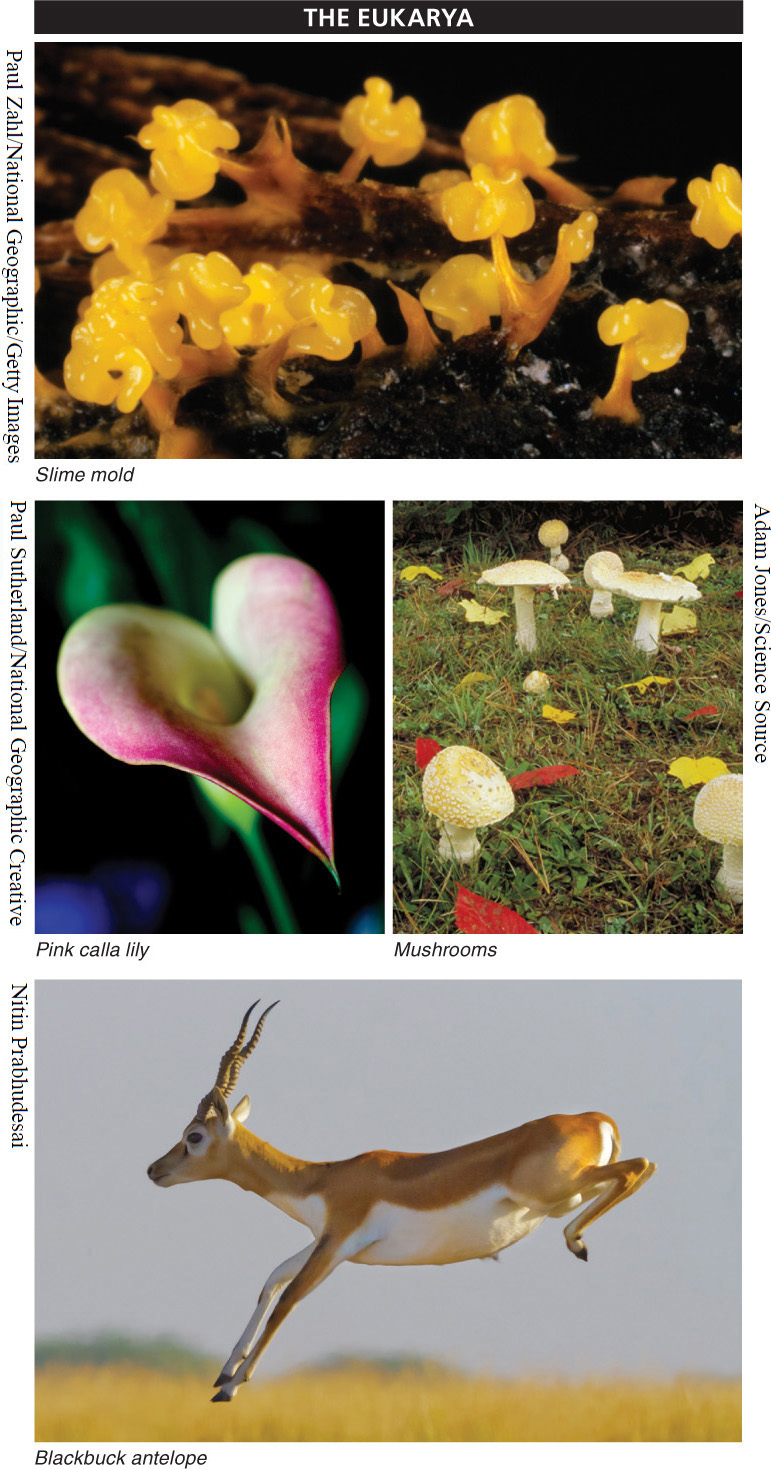After exploring the archaea and bacteria domains, turning to the eukarya feels like coming home. We are most familiar with this domain: all of the living organisms that we can see are eukarya. Plants, mushrooms, slime molds, insects, fish, birds, and, of course, mammals, including humans. There are three kingdoms of eukarya that can be seen with the naked eye: plants, animals, and fungi (FIGURE 10-32). All are made up from eukaryotic cells—

A fourth kingdom contains the protists, which are often too small to be seen by the naked eye, and is a sort of grab bag that includes a wide range of mostly single-
Because they are so much easier to see than bacteria and archaea, a disproportionate number of the named species on earth are in the domain eukarya. In fact, of the 1.5 million named species, the majority are eukarya, with about half being insects. This is more a result of the interests and biases of biologists than a reflection of the relative numbers of actual species in the world. We explore the great diversity of the eukarya in Chapters 11 (on animals) and 12 (on plants and fungi).
TAKE-HOME MESSAGE 10.18
All living organisms that we can see with the naked eye (and many that are too small to be seen) are eukarya, including all plants, animals, and fungi. The eukarya are unique among the three domains in having cells with organelles.
Eukaryotes are classified into four kingdoms—
Of these kingdoms, the protists are the most diverse and will likely be split into multiple smaller kingdoms. Protists often are invisible to the naked eye, and we tend to know more about organisms that we can easily observe.
438